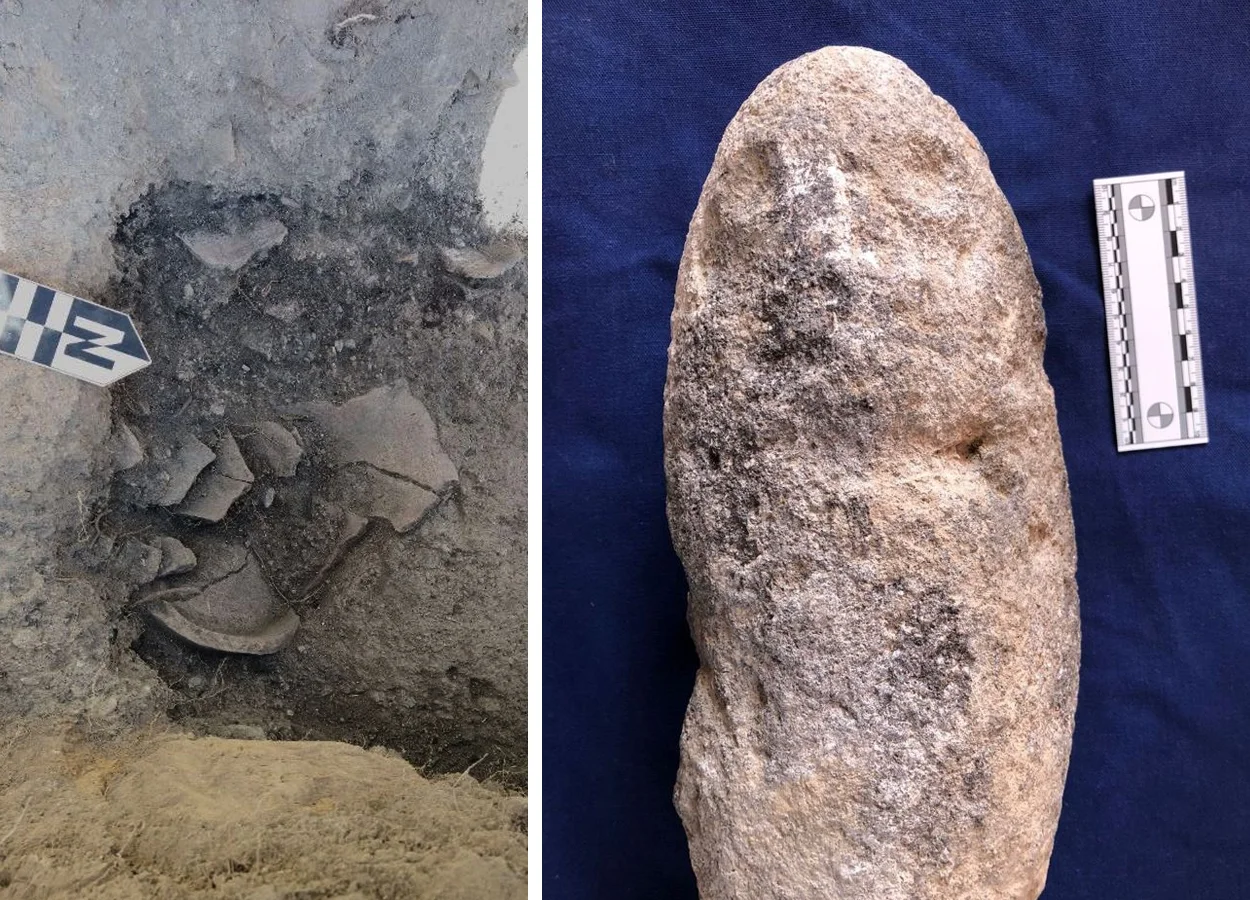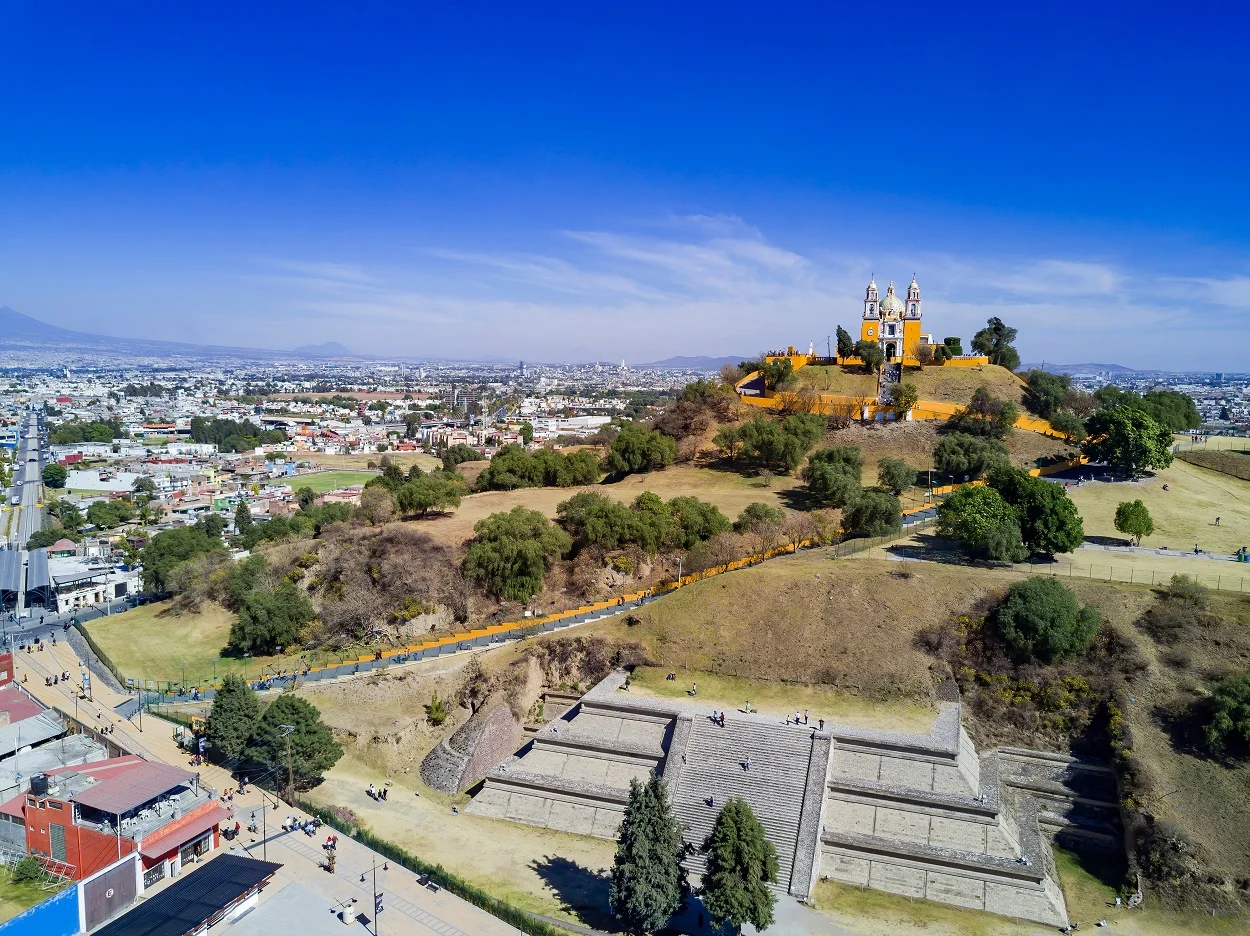Archaeologists conducting restoration works have made exciting new discoveries at the Great Pyramid of Cholula.
The Great Pyramid of Cholula, also known as Tlachihualtepetl (meaning “made-by-hand mountain” in Nahuatl), is an archaeological site and temple complex in the San Andrés Cholula, Puebla municipality of Mexico.
The pyramid is dedicated to the Aztec/Nahua version of the feathered-serpent deity, Quetzalcoatl, an important god in the Aztec pantheon who is associated with the wind, Venus, dawn, merchants, arts, crafts, knowledge, and learning.
Cholula is one of the largest pyramids by volume in the Americas, covering an area of 300 by 315 metres, compared to the Pyramid of the Sun at Teotihuacán, that measures 220 by 230 metres, and the Great Pyramid of Egypt, measuring 230 by 230 metres.
Occupation of the ceremonial precinct began in the Late Formative period, and the first building stage of the pyramid dates to the Terminal Formative. The Great Pyramid was built in four major construction stages and at least nine further phases of minor modifications.
Restoration works led by archaeologist, Catalina Castilla Morales, and supervised by the National Institute of Anthropology and History (INAH), have uncovered an adobe core on the eastern side of the pyramid that dates from the end of the Classic period.

The team also found an unusual accumulation of broken ceramics, which a closer analysis has determined were pre-Hispanic braziers. Whether the braziers had a ritual function or were simply used to illuminate the pyramid is unclear. What is apparent, is that there was a sustained use of fire at the pyramid, indicated by multiple deposits of ceramics placed in layers after they were discarded.
Excavations also found a 30cm cylindrical sculpture in white stone, representing the Aztec god, Tlaloc, the supreme god of the rain, earthly fertility and of water, depicted with his “goggle eyes” and fangs.
As part of the restoration works, the team have conducted archaeological surveys on the surface, as well as studies of the underground level and cleaning of 24 tunnels beneath the pyramid.
Header Image – Pyramid of Cholula – Image Credit : Kit Leong – Shutterstock





